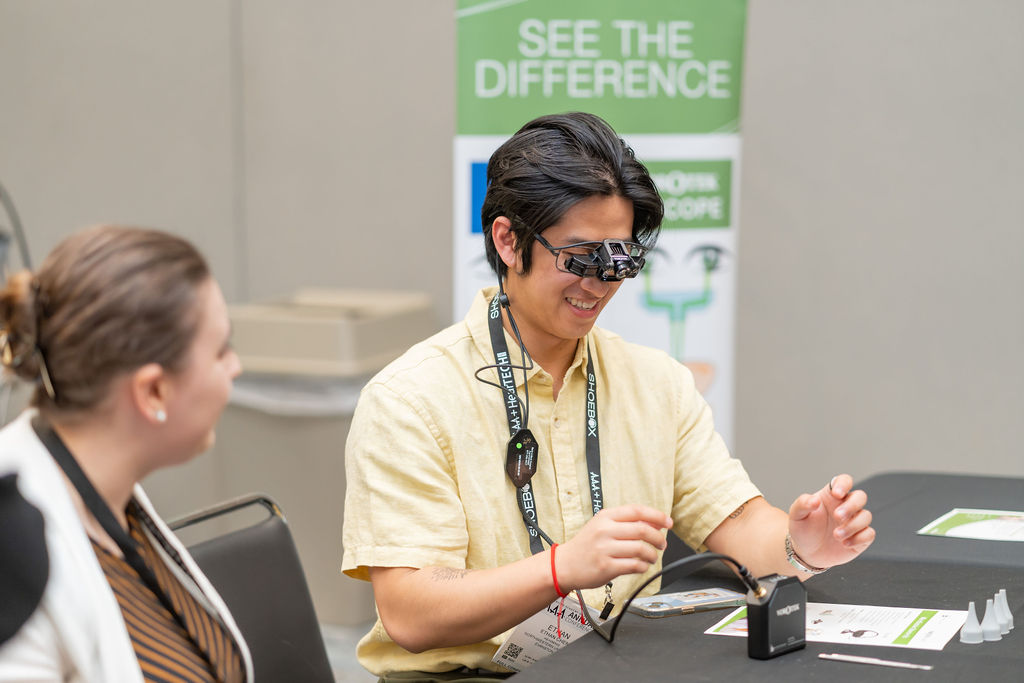Most of us know that cochlear implants (CIs) use electrical signals to stimulate the auditory nerve and send messages to the brain. These signals are interpreted by the user as sound. While technological advances have made CIs even better than ever, they have their limitations when it comes to frequency discrimination.
Most users of CIs can distinguish between 12-22 frequency bands, while an individual with normal pure-tone hearing sensitivity can differentiate between 2,000 different frequencies (Svirsky, 2017). CI recipients continue to want more natural sound, more enjoyment of music, and better comprehension of speech. In fact, after initial stimulation, new CI users often report speech as a “radio out of tune” or sounding like “Mickey Mouse” or “Donald Duck” (Svirsky, 2017). The human brain is highly plastic, however, and the quality and intelligibility of speech improves with appropriate aural therapy and time.
Optogenetics is a relatively new technique in neuroscience, which relates to light-sensitive proteins in algae that regulate the flow of ions across a cellular membrane. Researchers began taking the genes that coded for these proteins and inserting them into neurons. By shining a light on these genetically altered neurons, they opened their voltage-gated ion channels and would fire or activate. Optogenetics are now being used in experiments worldwide in medical applications like vision restoration and cardiac pacing (Al Idrus, 2016).
Dr. Tobias Moser (2022) and his team at the University Medical Center Göttingen in Germany are working on using light, which doesn’t travel through tissue, to stimulate the auditory nerve. Optogenetics can be used to make cochlear nerve cells light sensitive and then stimulate these nerve cells with beams of low-energy light. This, in turn, could produce much finer auditory sensations than what is available with current CIs.
Sound stimuli could be split up electronically into many more discrete frequency bands, giving users a much richer experience of sound. The proposed device will use tiny light-emitting devices, or LEDs, and requires gene therapy that makes the nerve cells in and around the eighth nerve sensitive to light. Moser and his team introduced a gene into deaf rats that made their auditory nerves more sensitive to light and were able to restore hearing with a 10-channel implant. Their goal is to create an implant with 100 channels. However, it’s still “some years away” from human testing, as the team needs to ensure safety and reliability and find a way to make the LEDs last longer.
Dr. Tobias and his team are hoping for a future with far better soundscapes and discrimination for deaf and hard of hearing individuals who receive a cochlear implant powered by beams of light
References
Al Idrus A. (2016) Gene therapy could lead to better, light-based cochlear implants. Fierce Biotech (accessed August 1, 2022)
Moser T. (2022) Restoring hearing with beams of light. IEEE Spectrum (accessed August 1, 2022)
Svirsky M. (2017) Cochlear implants and electronic hearing. Physics Today 70:8(52).
Recent Posts
Academy Presents Inaugural AAA National Health Leadership Award to Representative Bilirakis
Today, Patrick Gallagher, Executive Director of the American Academy of Audiology, presented the inaugural AAA National Hearing Health Leadership Award to Representative Gus Bilirakis (R-FL)…
2026 Academy Honors and Awards Recipients
Every year, the Academy asks colleagues, friends, and mentees to look around their professional circles and identify members who are deserving of recognition for outstanding…
Turn Insight Into Action! Attend Learning Labs at AAA 2026
Ready to take your professional development to the next level? At AAA 2026, Learning Labs are your chance to go beyond lectures and dive into…


